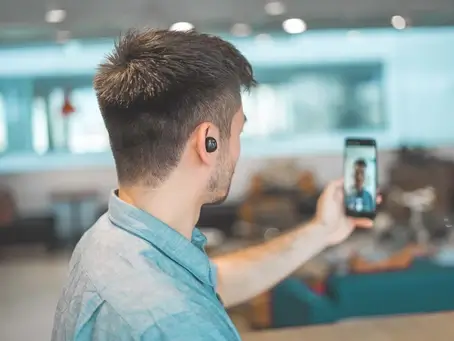COVID-19 has changed a lot of areas of everyday life, for a lot of people. A huge amount of us are now working from home, without the usual opportunities for social connection due to not being ‘at the office’ (or your usual place of work), as well as due to the government restrictions in place to help us stop the spread.
A global health crisis and a resulting change in work arrangements has the potential to create tremendous stress and anxiety for you and those around you.
Feeling lonely can increase the risk of depression by 15.2%(1) and can be linked to poor health behaviors, poor sleep, and poor immune function, leading to a potential greater risk of COVID-19 infection, as well as a cold or the flu. According to a Workforce study, isolated employees are often less productive, make poorer decisions and are less committed to their employers.(1) 40% of lonely workers feel less productive, 38% make mistakes and 36% report getting sick more often(2). Can you afford these outcomes for your remote team and colleagues?
Below are a few effective strategies that you can implement in a short space of time in order to take action against reducing these employee health and productivity risks.
-
Ensure everyone has access to platforms that allow for social connection. This could be a WhatsApp group, Zoom meeting software, Google Hangouts, Microsoft Teams, Skype, etc. There is an abundance of software available that allows for video conferencing; the key is to make sure everyone knows how they can access it. Of equal importance is to ensure they have access to a camera and microphone. In some circumstances, this will be built into a laptop, for others they may need to have a separate device purchased.
-
Organise a daily/weekly catch up. If you’re at work, it’s easy to go and chat to someone at their desk or as you pass them on the way to the photocopier or kitchen. Working from home takes away this luxury. If your team or colleagues are working remotely, set up regular online catch-ups. This provides a good opportunity to check if anyone is experiencing any IT or work-related issues and/or to make sure everyone knows what they’re doing. If nothing else, it allows the opportunity to see another face and someone to talk to. For some, this might be the only time they get this human interaction. With remote teams, communication can be more challenging and things can get lost in translation, therefore it’s important to be crystal clear about duties and responsibilities. A weekly catch up with your team certainly supports this.
-
Be available and supportive. Everyone is feeling the strain of this “new normal”. It’s going to take some time to adjust to this change. A good question to frequently ask is how can I help you be more productive and feel more connected?” As well as making sure your team and colleagues know you’re available if they need support, you could set up an employee engagement survey (if you don’t have one in place already) to understand the general mood within your remote workforce. Upon receiving feedback, you can act accordingly.
-
Schedule time for Q&A. Regular check-ins can go a long way to make people feel included and valued, plus gives them the opportunity to raise any questions they have that they might normally ask you at your desk. These scheduled check-ins help employees maintain their productivity levels and feel less disconnected.
-
Host a workplace competition. Build & promote health, keep connected & boost morale with an online competition. This could be range from seeing who can increase their daily step count by the highest percentage to voting on the most delicious ‘at-home’ lunch recipe of the week. Competitions encourage teamwork, camaraderie, and improved culture, all while having a positive effect on an individual’s health.
How have you been staying connected and supporting your team during COVID-19? If you’d like some help or advice on how to look after employee health & mental wellbeing, contact us today to find out how we can help.
Sources:
1 – https://www.workforce.com/news/workplace-loneliness-is-sad-for-people-and-bad-for-business
2 – Workplace Loneliness Report – A future that works, Dr Lindsay McMillan

